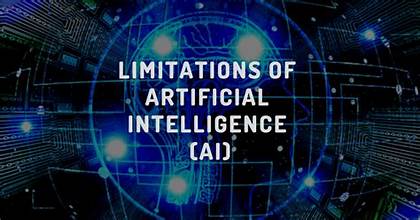Introduction
The rapid evolution of artificial intelligence (AI) has transformed industries, reshaping how businesses operate and how consumers interact with technology. Among the most groundbreaking advancements is AI Insights DualMedia, a cutting-edge approach that leverages dual-media processing to enhance data analysis, decision-making, and automation. This innovative fusion of AI and multimedia insights is setting new benchmarks in efficiency, accuracy, and scalability.
In this comprehensive guide, we will explore AI Insights DualMedia in depth, examining its core functionalities, benefits, applications across industries, and future potential. Whether you’re a business leader, tech enthusiast, or AI researcher, understanding this revolutionary concept will provide valuable insights into the next wave of intelligent systems.
Table of Contents
What Is AI Insights DualMedia?
AI Insights DualMedia refers to an advanced AI framework that processes and analyzes data from two distinct media sources—such as text and images, audio and video, or structured and unstructured data—simultaneously. By integrating insights from multiple data streams, this approach delivers more comprehensive, contextual, and actionable intelligence than single-media AI systems.
Key Components of AI Insights DualMedia
- Multimodal Data Processing – Unlike traditional AI models that focus on a single data type (e.g., text-only NLP models), AI Insights DualMedia combines multiple data formats to generate richer insights.
- Cross-Media Correlation – The system identifies patterns and relationships between different media types, enhancing predictive accuracy.
- Real-Time Synchronization – Many AI Insights DualMedia applications operate in real-time, making them ideal for dynamic environments like customer service, surveillance, and healthcare diagnostics.
- Deep Learning Integration – Neural networks, including convolutional neural networks (CNNs) and transformers, power the analysis of complex multimedia datasets.
How AI Insights DualMedia Works
To understand the mechanics behind AI Insights DualMedia, let’s break down its operational workflow:
1. Data Ingestion & Preprocessing
The system collects raw data from multiple sources—such as video feeds, audio recordings, social media posts, and sensor data. Before analysis, the data undergoes cleaning, normalization, and feature extraction to ensure consistency.
2. Parallel Media Processing
Using specialized AI models, the system processes each media type independently. For example:
- Text Data: NLP models extract sentiment, keywords, and intent.
- Visual Data: Computer vision algorithms detect objects, faces, and motion.
- Audio Data: Speech recognition models convert spoken words into text for further analysis.
3. Fusion & Correlation
The processed data is then fused to uncover deeper insights. For instance, analyzing a customer support call (audio) alongside chat logs (text) can reveal discrepancies or emotional cues that a single-medium analysis might miss.
4. Insight Generation & Actionable Output
The final step involves generating reports, alerts, or automated actions based on the correlated insights. Businesses can use these outputs to optimize operations, enhance customer experiences, or detect anomalies.
Benefits of AI Insights DualMedia

The adoption of AI Insights DualMedia offers numerous advantages across various sectors:
1. Enhanced Decision-Making
By combining multiple data sources, organizations gain a 360-degree view of scenarios, leading to more informed and accurate decisions.
2. Improved Accuracy & Reduced Bias
Single-media AI systems may produce skewed results due to limited context. Dual-media analysis mitigates this by cross-verifying insights from different data streams.
3. Real-Time Responsiveness
Industries like cybersecurity and autonomous driving benefit from instantaneous data fusion, enabling rapid threat detection and response.
4. Cost & Operational Efficiency
Automating dual-media analysis reduces manual effort, accelerates workflows, and minimizes errors—resulting in significant cost savings.
5. Personalized User Experiences
E-commerce, entertainment, and marketing platforms leverage AI Insights DualMedia to deliver hyper-personalized recommendations by analyzing user behavior across text, images, and videos.
Applications of AI Insights DualMedia Across Industries
1. Healthcare & Medical Diagnostics
- Radiology & Pathology: AI analyzes medical images (X-rays, MRIs) alongside patient records to improve diagnostic accuracy.
- Telemedicine: Combines voice analysis (for stress detection) with visual symptoms for remote patient monitoring.
2. Retail & E-Commerce
- Visual Search & Recommendations: Shoppers upload images, and AI matches them with product descriptions and reviews.
- Sentiment Analysis: Evaluates customer feedback from both text (reviews) and video (product unboxing reactions).
3. Finance & Fraud Detection
- Transaction Monitoring: AI cross-checks audio (customer calls) with transaction logs to detect fraudulent activities.
- Risk Assessment: Combines financial reports (text) with market sentiment (social media) for better investment predictions.
4. Autonomous Vehicles & Smart Cities
- Traffic Management: AI processes live video feeds and sensor data to optimize traffic flow and reduce congestion.
- Self-Driving Cars: Combines LiDAR, camera visuals, and audio alerts for safer navigation.
5. Media & Entertainment
- Content Moderation: Detects harmful content by analyzing both video and text (comments, captions).
- Personalized Streaming: Recommends shows based on viewing history (video) and user reviews (text).
Challenges & Limitations of AI Insights DualMedia

Despite its transformative potential, AI Insights DualMedia faces several hurdles:
1. Data Privacy & Security Concerns
Handling multiple data streams increases exposure risks, requiring robust encryption and compliance with regulations like GDPR.
2. High Computational Costs
Processing dual-media data demands significant computational power, making it resource-intensive for smaller enterprises.
3. Integration Complexity
Legacy systems may struggle to incorporate AI Insights DualMedia, necessitating infrastructure upgrades.
4. Bias in Multimodal Data
If training datasets are unbalanced, the AI may inherit biases, leading to flawed insights.
The Future of AI Insights DualMedia
As AI technology advances, AI Insights DualMedia is poised to become even more sophisticated. Key future trends include:
1. Edge AI Integration
Moving processing closer to data sources (e.g., IoT devices) will reduce latency and enhance real-time capabilities.
2. Generative AI & Synthetic Data
Models like GPT-4 and DALL-E will enable synthetic data generation, improving training datasets for dual-media analysis.
3. Explainable AI (XAI)
Future systems will provide transparent reasoning behind insights, increasing trust and adoption.
4. Expansion into New Industries
Fields like agriculture, education, and legal services will increasingly adopt AI Insights DualMedia for precision farming, adaptive learning, and contract analysis.
Also read Photeeq Lens Flare: A Comprehensive Guide to Mastering This Stunning Effect
Conclusion
AI Insights DualMedia represents a paradigm shift in artificial intelligence, offering unparalleled depth and accuracy by harnessing the power of dual-media analysis. From healthcare to finance, its applications are vast, driving efficiency, personalization, and innovation. While challenges like data privacy and computational costs remain, ongoing advancements in AI will continue to refine and expand its capabilities.
Businesses that embrace AI Insights DualMedia today will gain a competitive edge, positioning themselves at the forefront of the AI revolution. As we look ahead, the fusion of multiple data streams will unlock new possibilities, making intelligent systems more intuitive, responsive, and impactful than ever before.
